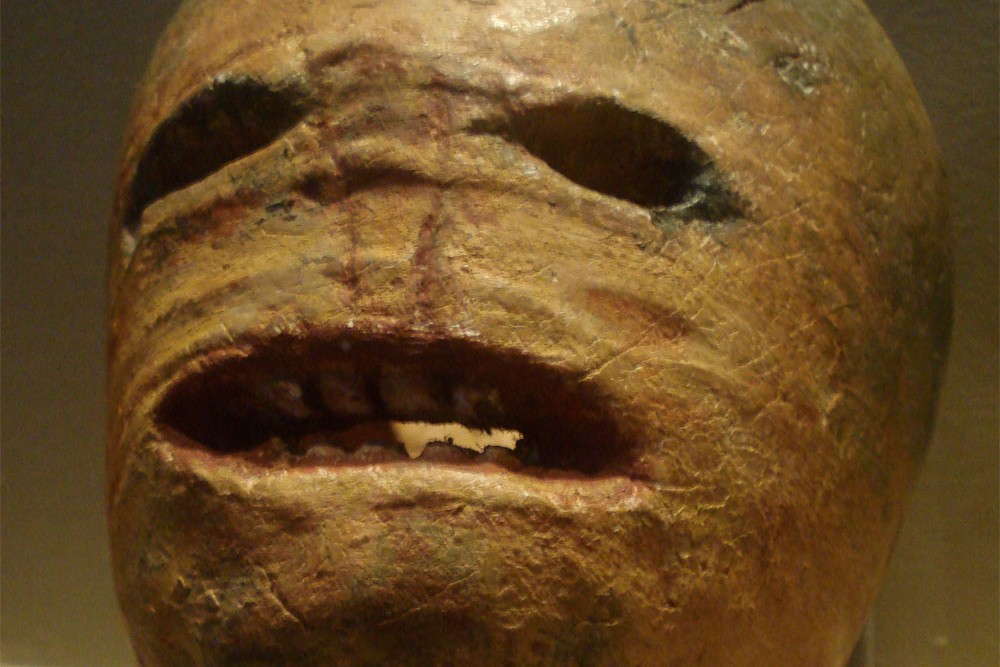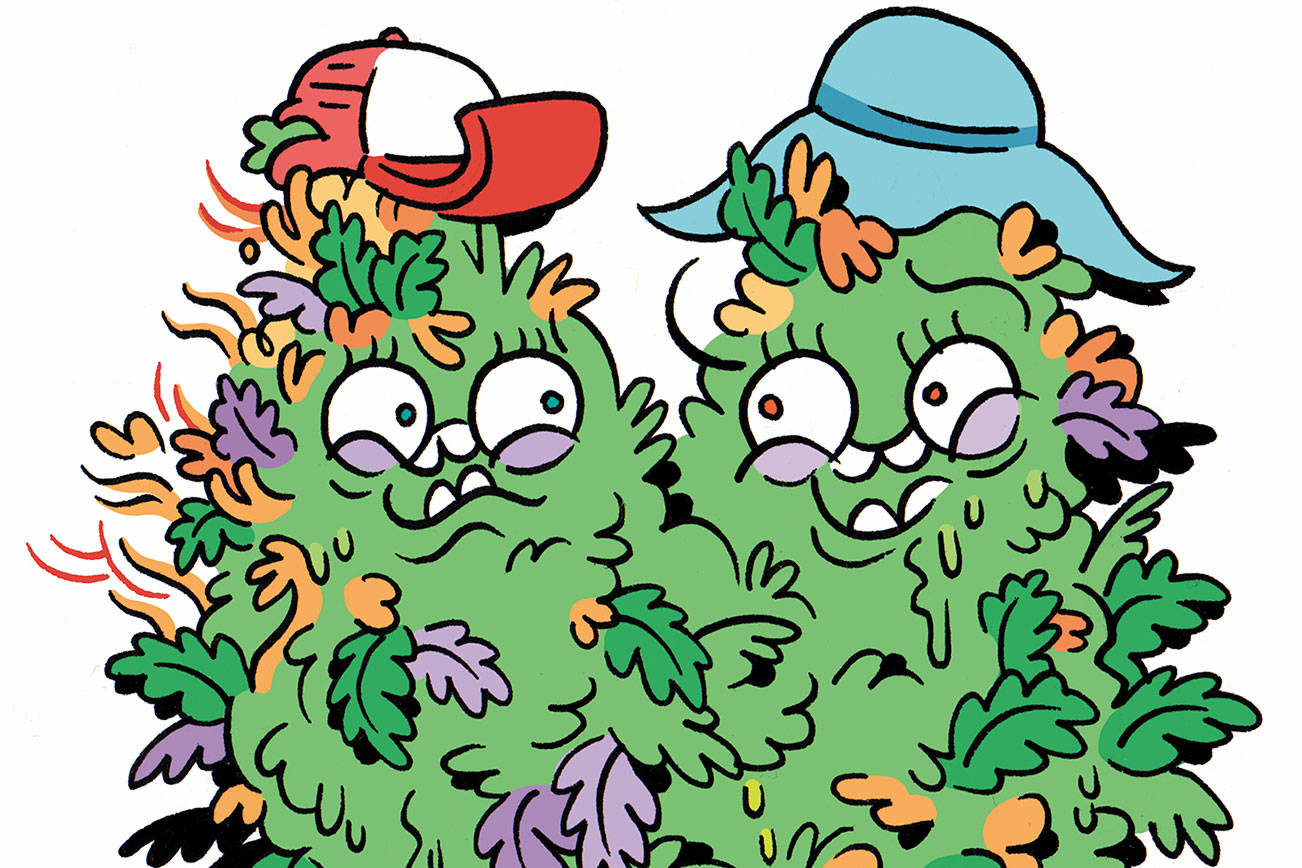Halloween. The word conjures images of caramel apples, jack-o’-lanterns, costumes, and of course all things “spooky.” This is one of those holidays that, try as the Catholic church may have, it never could separate from its Pagan roots. Another name for Halloween is Samhain—usually pronounced “sow-iyn”—and, for many folks who identify as Pagan, like witches and Wiccans, it’s one of the holiest days of the year. And while today’s version may seem all fun and games, behind the masks and piles of candy lie serious traditions paying homage to the forces of life and death.
For ancient people all over the Northern Hemisphere, the waning of the sun’s energy in mid-autumn heralded the end of the bright, warm, abundant part of the year. Most plants and animals stop producing offspring; the days grow shorter, the nights longer. Then rain and snows come, so some peoples refer to this time as “The Feast of the Snow Witch.” It was normal to see not only the land but members of your family and community, as well as livestock, die off during winter. Ancient people struggled with ways to ensure their safety and health through these long months, calling on ancestors to lend their wisdom and foresight as people peered into the unknown.
This “shutting down” of Earth was considered the primordial face of Chaos rising and assuming reign over a portion of the year. It was thought the “veil between the worlds” was thinner—the spirits of the dead would walk the earth. In other words, everything was going wrong, backwards, upside down. Even the gods weren’t immune to this disorder, and many of the great underworld journey myths take place at this time of year: The Greek goddess Kore/Persephone journeys to Hades; the Assyrian goddess Ishtar makes her descent; the Egyptian god Osiris is killed by his brother, Set, and resurrected by the great goddess Isis.
One way people observed this was to dress up and wear masks—a practice that goes back at least to ancient Greece—as a way to trick the dead souls and demons that wandered Earth. People hoped that by blending in with the devils, they would be overlooked and spared misfortune in the coming months. Masking was also used to trick one another to prepare for the chaos of winter; placation for the mischief-makers usually came as a coin or a sweet treat, hence the “Trick or Treat” of today. A house that refused to pass out treats might have ended up with piss-pots overturned on their doorsteps and the walls splattered with rotting vegetables—the modern equivalent being a good old-fashioned TP-ing.
Even the tradition of jack-o’-lanterns has a darker side. The pumpkins we carve now are a 150-year-old American addition to a much older custom. For more than 2,000 years, people in Western Europe have been carving goblin and demon faces out of turnips, rutabagas, and small gourds, tucking a light inside, and carrying them on poles or leaving them near their doorsteps to ward off the “evil spirits” floating around. But before people used turnips and gourds, it’s suspected some Pagans, like the Druids, used human heads. They believed the head was the seat of the soul, and Celtic warriors would behead the soldiers they killed and mount their heads on poles outside their village to protect their lands.
Nearly every belief system on Earth has a festival dedicated to the forces of death, chaos, and ultimately rebirth, many of them at this time of year. In Mexico, Catholics celebrate Día de los Muertos, the Day of the Dead, when families party in graveyards with their ancestors, sprucing up the gravesites and having picnics right on them. In India, Kali Puja is dedicated to the Great Destroyer goddess, Kali. Her temples run red with the blood of animals sacrificed to ensure prosperity for all, but just days later Hindus celebrate Diwali, their massive week-long New Year’s festival, by hanging up colorful lights, eating amazing food, and shopping for new clothes.
In astrology, the sign that oversees this season is Scorpio, whose constellation is often described as moving “backwards in the sky,” and the Tarot card connected to it is Death. Both archetypes emphasize sex and death—sex in the sense of a union of opposites, namely order and discord, and death in the sense of deep personal transformation, the kind that often requires a dying-off of the old self before the new self can be reborn.
All of this—the hedonistic celebration of life, the appreciation for the abundance of the Earth, and the powerful reckoning of inevitable death and the transition of our life force into “something else”—are why many Pagans view this time of year as the Holy of Holies. Plus, we can finally wear our cool clothes.
In the modern era, most Pagans don’t have the luxury of endless foggy moors to go searching for elementals or huge tracts of land to build bonfires on. Many witches will carve pumpkins, put on costumes, hold giant, loud parties, and hand out treats to any devils who come knocking because they know to make room for love and chaos—or chaos will make its own room—but also because, as one of my sister witches, Sarah, likes to say, “Life is for the living!” But many witches will also head out to local cemeteries and tidy up graves, volunteer at senior homes, offer divination services to their communities, or hold Dumb Suppers—silent meals at which the table is dressed in black, attendees don’t speak, and a place is set for the spirits of anyone who would like to attend from beyond the veil. Pagans see the good in honoring the generations before them, the deeds and misdeeds that have added up to this moment. We are the accumulation of everything that has ever happened. This is the season of coming to terms with that sacred burden, choosing what to leave behind, and what to carry forward.
So this Halloween—sorry, Samhain—I recommend that you eat your fill of sweet treats, live it up, honor your dead, of which 2016 has provided too many, and pull a few pranks on friends and family. And then head bravely off into The Dark. Meagan Angus writes Stash Box for Seattle Weekly, plays violin for the Pagan-doomfolk trio Thunder Grey Pilgrim, and teaches The Wheel of the Year Series: Eight Sabbats for Witches. Learn more at meaganangus.com.
stashbox@seattleweekly.com








